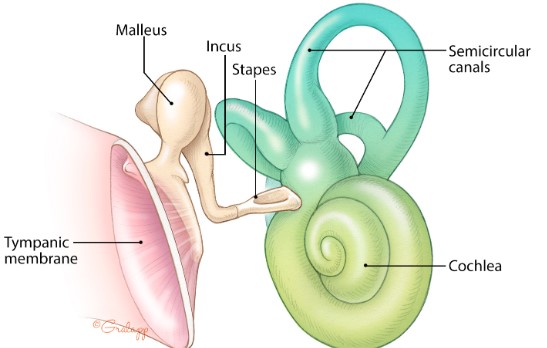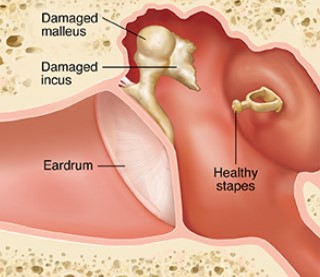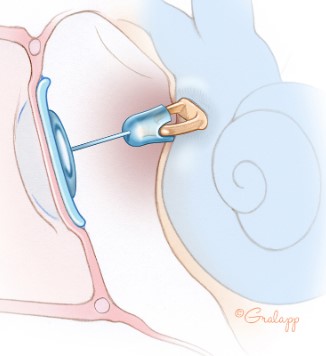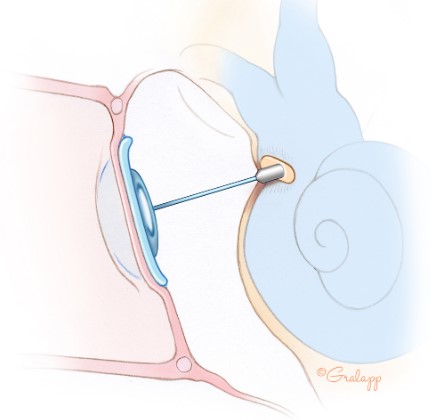Middle Ear Reconstruction in Dallas, Frisco, and Fort Worth, TX
Middle ear reconstruction is a surgical procedure to correct hearing deficits due to problems in the middle ear. It is also known as ossicular chain reconstruction and ossiculoplasty. To understand how the procedure works, it helps to understand how the middle ear normally functions.
The middle ear is made of the eardrum, the ossicles, the eustachian tube, and the air-filled space behind the eardrum. The eardrum and ossicles act like a bridge. Sound funneled down the ear canal set the drum and ossicles into motion. This energy is transferred to the inner ear and onward through the auditory system.

The Eustachian tube and mucosal lining of the middle ear maintain the optimum environment for sound conduction. They provide circulation of air and defense against infection. Failure of these processes leads to middle ear dysfunction.
Middle ear reconstruction may be helpful in certain patients with middle ear dysfunction. When middle ear dysfunction leads to collapse of the eardrum or disruption of the ossicles, middle ear reconstruction may restore hearing.

Ossiculoplasty replaces damaged hearing bones, restoring the continuity of the auditory system. Prosthetic ossicles come in many different shapes and sizes to provide a custom fit option for the various ways ossicles can be damaged. A PORP, or partial ossicular reconstruction prosthesis, is used when the stapes remains intact. If all the hearing bones are damaged, a TORP, or total ossicular reconstruction prosthesis is used.

Defects in the eardrum, such as collapse or perforations, can be repaired simultaneously or staged, depending on the overall health of the ear. For example, in an ear with collapsed eardrum and partial ossicular loss, a prosthesis is used for the ossiculoplasty and the collapsed eardrum is repaired/reinforced with a cartilage graft.
In contrast, in an ear with a cholesteatoma, extensive inflammation may be present. The surgeon may elect to stage the repair. This means an initial operation to remove the cholesteatoma and repair the eardrum, a period of healing of about 6-12 months, followed by a second surgery to repair the ossicles with a prosthesis. This way the prosthesis is placed in a stable ear providing more predictable outcomes.

These procedures are done in a surgery center, and you can go home a few hours after your procedure. They are typically done through the ear canal or through a small incision behind the ear. Patients are completely asleep for the duration of the procedure. They typically note minimal pain and numbness of the ear/jaw/tongue. They are back to work within a few days to a week.
In summary, middle ear reconstruction involves repairing the eardrum and/or hearing bones to restore sound conduction through the middle ear. This re-establishes the continuity of the auditory system and improved hearing. Surgery is minimally invasive, safe, and effective.

